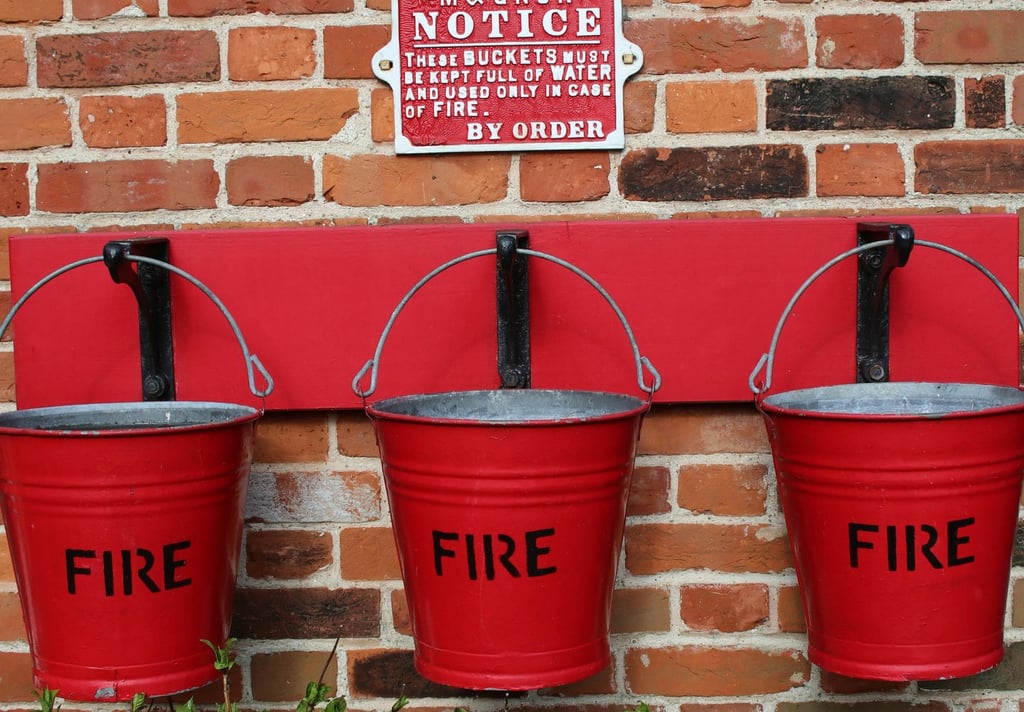Preventing Fires and Other Risks
An exploration of key themes from recent fire service inspections and national guidance, highlighting how a strategic, data-driven approach can strengthen prevention of fires and broader community risks.
7/16/20255 min read


The question of “how well does the service prevent fires and other risks?” forms a key part of the HMICFRS assessment framework, and performance across the sector remains variable. Crucially, this area of focus now extends beyond traditional fire prevention to include wider risks such as health and wellbeing, safeguarding, and multi-agency working.
This article reflects on key themes emerging from HMICFRS inspections and national guidance, particularly the NFCC’s Community Risk Programme. It also explores how services can strengthen their strategic approach, supported by robust data and clear prioritisation.
Inspection findings: strengths and areas for improvement
The 2023–25 inspection cycle has highlighted a wide range of findings in the area of prevention. While some fire and rescue services have been recognised for their strong strategic leadership and proactive engagement with partners, others have received lower grades due to limitations in how prevention is targeted, delivered, or evaluated.
A recurring area for improvement is the need to ensure that prevention work is directed towards those most at risk. This recommendation has appeared repeatedly across service reports and often reflects a lack of robust data, unclear targeting criteria, or inconsistencies in how local risk is interpreted and acted upon.
Another recurring theme concerns how services evaluate the effectiveness of their prevention activity. While most can report on the number of visits, events or interventions delivered, fewer are able to demonstrate the impact, whether in terms of reduced risk, changed behaviour, or improved outcomes for vulnerable people.
Together, these challenges point to the need for a stronger strategic and analytical foundation: FRSs must make informed decisions about who to reach, how to intervene, and what difference their work is making.
The role of national tools: building consistency through the CRMP process
Underpinning all effective prevention activity should be a well-considered Community Risk Management Plan (CRMP). This provides the framework through which services identify local needs, assess relative levels of risk, and allocate resources across prevention, protection and response. There is sometimes a tendency for FRS functions to become overly compartmentalised or siloed. Instead, the objectives for prevention should be consistent and integrated with other departments in terms of reducing risk across the community.
The NFCC’s Community Risk Programme has made significant progress in supporting this process, not least through the development of the Dwelling Fire Risk Methodology. This methodology offers a structured, data-driven approach to identifying fire risk at LSOA or household level, incorporating factors such as previous incident history, local demographics and building characteristics.
While by no means a silver bullet, adopting this model can help FRSs to:
Develop a clearer rationale for where and how prevention activity is targeted.
Engage more confidently with partners and communities using transparent, evidence-based approaches.
Align internal resources and delivery models more effectively with local risk profiles.
Although the methodology is not mandatory (and nor should it be), the move towards greater national consistency is helpful. Decisions around prevention should be rooted in a shared understanding of risk, rather than subjective interpretation or simple historical patterns.
Broadening the prevention lens: non-fire risks
While much of the sector’s prevention work rightly focuses on fire-related risks, particularly dwelling fires, in many areas, non-fire incidents such as road traffic collisions and flooding now account for a greater share of operational demand. Of these, RTCs remain one of the most frequent and high-impact categories of non-fire callout.
While prevention of non-fire incidents is not a statutory duty, HMICFRS has recognised that some services take an active role in reducing risk on the roads, often through school-based education, targeted campaigns in partnership with police and highways teams, or by contributing to local infrastructure planning decisions.
The picture, however, is uneven. In some cases, RTC prevention activity is limited by funding, capacity or clarity of role, with some services uncertain about how far they should go in addressing non-statutory risk.
Nonetheless, there is a strong argument that fire and rescue services can take a proactive approach to reducing the demand associated with non-fire incidents. This might involve:
Using local incident data to identify collision hotspots or seasonal risk factors.
Working alongside highways authorities and police service partners to share knowledge and develop joined-up strategies.
Supporting public education, particularly with young or high-risk drivers, where capacity allows.
By considering non-fire risks within the CRMP and prevention strategy, even where formal responsibility rests elsewhere, FRSs can take a more rounded view of how they protect life, reduce harm and contribute to community wellbeing.
From strategy to delivery: two areas of focus
Drawing on inspection findings and national good practice, two key areas emerge where services can strengthen their prevention approach.
1. Targeting people most at risk
While most FRSs state that they aim to reach high-risk individuals, few can clearly articulate how those people are identified, what criteria are used, and how this informs operational delivery. In some cases, data systems are not configured to support detailed targeting; in others, referral pathways from partners are under-developed or insufficiently monitored.
To address this, services may wish to:
Make better use of available data sources, such as demographic information, deprivation indices, or local referral trends, to build a more detailed picture of who is most at risk and where they live.
Invest in training and development to ensure frontline staff and prevention teams have the skills and tools needed to interpret data insights and apply risk-based targeting effectively.
Strengthen referral mechanisms from health, housing and voluntary sector partners and ensure follow-up is monitored.
Ultimately, a more systematic approach to targeting can help services make best use of limited capacity, while also strengthening the case for investment in prevention activity.
2. Evaluating impact, not just activity
A second area that merits further attention is the way in which services assess the effectiveness of their prevention work. While output measures, such as the number of Safe and Well visits completed, remain important, they do not in themselves demonstrate value or improvement. In some cases, there is an overemphasis on quantity rather than quality.
A more meaningful approach to evaluation might involve:
Defining intended outcomes for each type of intervention, for example, improved home safety, increased confidence, or reduced reattendance.
Tracking medium-term changes in behaviour, incident rates or partner referrals following specific campaigns or visits.
Integrating qualitative feedback from service users or partner agencies to complement quantitative data.
By strengthening evaluation in this way, services can begin to close the feedback loop between strategy, delivery and learning, and make more informed decisions about what to do next.
Supporting services through strategic consultancy
At GTH Consulting, I work with fire and rescue services to develop clearer, more strategic approaches to risk and prevention. This includes:
Reviewing and strengthening CRMPs, ensuring that prevention is fully embedded and aligned with risk.
Supporting data and insight work, including mapping need, targeting activity, and evaluating impact.
Benchmarking current performance using national inspection findings and emerging practice from across the sector.
For services looking to build business cases, adapt delivery models or demonstrate value, independent support of this kind can provide both challenge and clarity, ultimately helping to drive strategic improvement.
Final reflections
Prevention is no longer a secondary strand of fire and rescue activity. It is a core means through which services deliver public value, support vulnerable people, and reduce demand on other parts of the system. But to be effective, it must be underpinned by a thorough understanding of risk, a clear plan for delivery, and a willingness to evaluate and adapt.
As expectations grow, so too does the need for consistency, transparency and evidence. Strong local strategies are required, which should be informed by internal integration, external challenge, and the appropriate use of national guidance and risk methodologies.
If your service is seeking to strengthen its prevention work or refresh its risk management approach, I would be pleased to discuss how I might assist.






